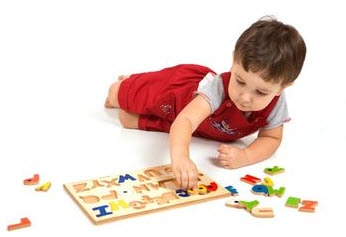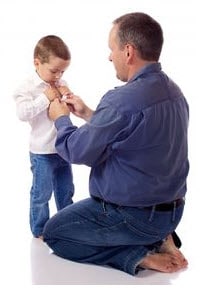There are no medications that can cure ASD or treat the core symptoms. However, there are medications that can help some people with ASD function better. For example, medication might help manage high energy levels, inability to focus, depression, or seizures.
Medications might not affect all children in the same way. It is important to work with a health care professional who has experience in treating children with ASD. Parents and health care professionals must closely monitor a child’s progress and reactions while he or she is taking a medication to be sure that any negative side effects of the treatment do not outweigh the benefits.
It is also important to remember that children with ASD can get sick or injured just like children without ASD. Regular medical and dental exams should be part of a child’s treatment plan. Often it is hard to tell if a child’s behavior is related to the ASD or is caused by a separate health condition. For instance, head banging could be a symptom of the ASD, or it could be a sign that the child is having headaches. In those cases, a thorough physical exam is needed. Monitoring healthy development means not only paying attention to symptoms related to ASD, but also to the child’s physical and mental health, as well.

Early Intervention Services
Research shows that early intervention treatment services can greatly improve a child’s development. Early intervention services help children from birth to 3 years old (36 months) learn important skills. Services include therapy to help the child talk, walk, and interact with others. Therefore, it is important to talk to your child’s doctor as soon as possible if you think your child has an ASD or other developmental problem.
Even if your child has not been diagnosed with an ASD, he or she may be eligible for early intervention treatment services. The Individuals with Disabilities Education Act (IDEA) says that children under the age of 3 years (36 months) who are at risk of having developmental delays may be eligible for services. These services are provided through an early intervention system in your state. Through this system, you can ask for an evaluation.
In addition, treatment for particular symptoms, such as speech therapy for language delays, often does not need to wait for a formal ASD diagnosis. While early intervention is extremely important, intervention at any age can be helpful.
Types of Treatments
There are many different types of treatments available. For example, auditory training, discrete trial training, vitamin therapy, anti-yeast therapy, facilitated communication, music therapy, occupational therapy, physical therapy, and sensory integration.
The different types of treatments can generally be broken down into the following categories:
- Behavior and Communication Approaches
- Dietary Approaches
- Medication
- Complementary and Alternative Medicine..
Behavior and Communication Approaches
According to reports by the American Academy of Pediatrics and the National Research Council, behavior and communication approaches that help children with ASD are those that provide structure, direction, and organization for the child in addition to family participation.
 Applied Behavior Analysis (ABA)
Applied Behavior Analysis (ABA)
A notable treatment approach for people with an ASD is called applied behavior analysis (ABA). ABA has become widely accepted among health care professionals and used in many schools and treatment clinics. ABA encourages positive behaviors and discourages negative behaviors in order to improve a variety of skills. The child’s progress is tracked and measured.
There are different types of ABA. Following are some examples:
- Discrete Trial Training (DTT)
DTT is a style of teaching that uses a series of trials to teach each step of a desired behavior or response. Lessons are broken down into their simplest parts and positive reinforcement is used to reward correct answers and behaviors. Incorrect answers are ignored. - Early Intensive Behavioral Intervention (EIBI)
This is a type of ABA for very young children with an ASD, usually younger than five, and often younger than three. - Pivotal Response Training (PRT)
PRT aims to increase a child’s motivation to learn, monitor his own behavior, and initiate communication with others. Positive changes in these behaviors should have widespread effects on other behaviors. - Verbal Behavior Intervention (VBI)
VBI is a type of ABA that focuses on teaching verbal skills.
Other therapies that can be part of a complete treatment program for a child with an ASD include:
Developmental, Individual Differences, Relationship-Based Approach (DIR; also called “Floortime”) Floortime focuses on emotional and relational development (feelings, relationships with caregivers). It also focuses on how the child deals with sights, sounds, and smells.
Treatment and Education of Autistic and related Communication-handicapped CHildren (TEACCH)
TEAACH uses visual cues to teach skills. For example, picture cards can help teach a child how to get dressed by breaking information down into small steps.
TEAACH uses visual cues to teach skills. For example, picture cards can help teach a child how to get dressed by breaking information down into small steps.

Occupational Therapy
Occupational therapy teaches skills that help the person live as independently as possible. Skills might include dressing, eating, bathing, and relating to people.
Sensory Integration Therapy
Sensory integration therapy helps the person deal with sensory information, like sights, sounds, and smells. Sensory integration therapy could help a child who is bothered by certain sounds or does not like to be touched.
Speech Therapy
Speech therapy helps to improve the person’s communication skills. Some people are able to learn verbal communication skills. For others, using gestures or picture boards is more realistic.
The Picture Exchange Communication System (PECS)
PECS uses picture symbols to teach communication skills. The person is taught to use picture symbols to ask and answer questions and have a conversation.
PECS uses picture symbols to teach communication skills. The person is taught to use picture symbols to ask and answer questions and have a conversation.
Dietary Approaches
Some dietary treatments have been developed by reliable therapists. But many of these treatments do not have the scientific support needed for widespread recommendation. An unproven treatment might help one child, but may not help another.
Many biomedical interventions call for changes in diet. Such changes include removing certain types of foods from a child’s diet and using vitamin or mineral supplements. Dietary treatments are based on the idea that food allergies or lack of vitamins and minerals cause symptoms of ASD. Some parents feel that dietary changes make a difference in how their child acts or feels.
If you are thinking about changing your child’s diet, talk to the doctor first. Or talk with a nutritionist to be sure your child is getting important vitamins and minerals.
Medication
There are no medications that can cure ASD or even treat the main symptoms. But there are medications that can help some people with related symptoms. For example, medication might help manage high energy levels, inability to focus, depression, or seizures.
Complementary and Alternative Treatments
To relieve the symptoms of ASD, some parents and health care professionals use treatments that are outside of what is typically recommended by the pediatrician. These types of treatments are known as complementary and alternative treatments (CAM). They might include special diets, chelation (a treatment to remove heavy metals like lead from the body), biologicals (e.g., secretin), or body-based systems (like deep pressure).
These types of treatments are very controversial. Current research shows that as many as one third of parents of children with an ASD may have tried complementary or alternative medicine treatments, and up to 10% may be using a potentially dangerous treatment. Before starting such a treatment, check it out carefully, and talk to your child’s doctor.
